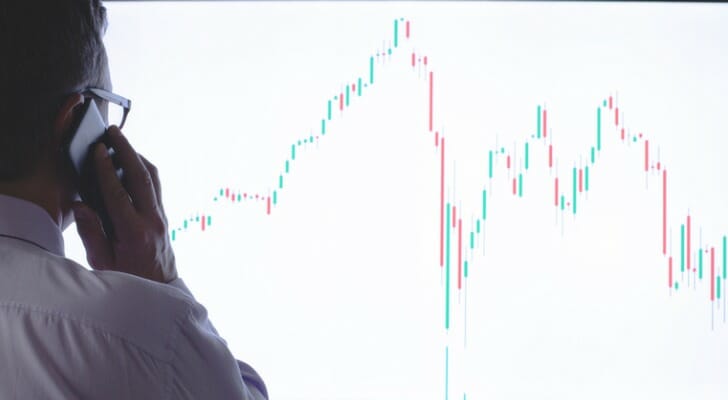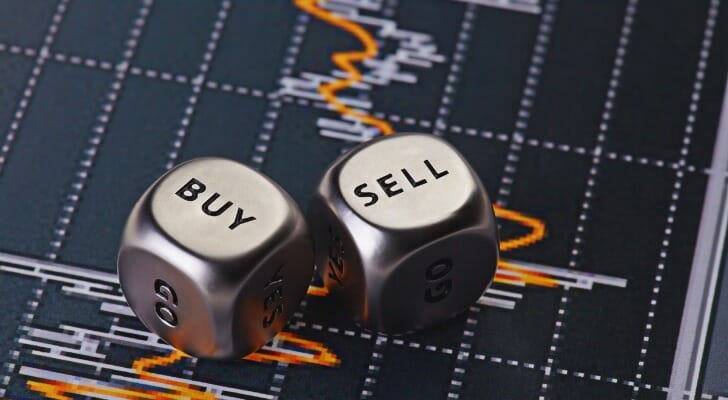Understanding Noise Trader Risk
Are you a noise trader? If so, professional investors probably don’t like you. They’ve even come up with a specific name for how you influence stocks: noise trader risk. That’s volatility from chasing trends...Friday, February 14th 2020, 9:04 pm
 Are you a noise trader? If so, professional investors probably don’t like you. They’ve even come up with a specific name for how you influence stocks: noise trader risk. That’s volatility from chasing trends and trading on emotion. But don’t feel too bad: That describes most investors.
Are you a noise trader? If so, professional investors probably don’t like you. They’ve even come up with a specific name for how you influence stocks: noise trader risk. That’s volatility from chasing trends and trading on emotion. But don’t feel too bad: That describes most investors.
What is Noise Trading?
Noise trading comes from the expression “hearing the signal through the noise.” It means to tell the difference between data that gives you helpful, useful information and data that simply clutters up your field of view.
A noise trader is an investor who makes trades based on emotion, short term volatility or other unprofessional metrics. This category of trader is someone who will trade based on fear or greed. For example, they sell as soon as a stock ticks down or buying anything that begins to move up. Often noise traders will often chase trends. As a result, they jump onto a stock that starts to look hot and bail out of those that begins trending downward.
They are generally known as traders who overreact, making their decisions based on the latest series of ticker numbers rather than any fundamental analysis of the underlying asset. A noise trader will buy a stock not because the company itself is sound but because it gained three points. They’ll sell a stock not because of any larger investment strategy, but because they’re afraid of taking losses.
Identifying Noise TradersThese are traders who react based on the “noise” in the market, its day-to-day volatility. This is as opposed to traders who make their decisions based on the “signal.” The latter includes fundamental analysis, long term technical analysis, or a guiding investment strategy.
Noise traders are often either day traders or retail investors; sometimes both. Professional investors look down on them as, essentially, amateurs playing with things they don’t understand. In fact, many articles discussing “noise traders” define them as an investor who makes decisions without the advice of a broker or financial analyst.
While writing amateur investors off as mere noise traders is condescending, there is truth to this term. Many investors react to the market emotionally. They make short term decisions based on how they want a stock to move rather than based on how it reasonably should. The only difference is that, in reality, more than a few noise traders move money around for a living.
Noise Trader Risk The most important element of noise trading is volatility. The greater a stock’s volatility, the more it will attract noise traders. If the stock has swung upward, it will gather people hoping for a quick ride. If it ticks down, many short-term traders will try to sell in order to avoid losses.
The most important element of noise trading is volatility. The greater a stock’s volatility, the more it will attract noise traders. If the stock has swung upward, it will gather people hoping for a quick ride. If it ticks down, many short-term traders will try to sell in order to avoid losses.
This reaction will, itself, influence the price of the stock. As investors flock to an asset that has gained some short-term value, their flurry of purchases will push the price of that stock higher than it might otherwise have gone. The reverse will happen when investors begin to sell.
In turn, this reaction will push the price of the stock past any adjustment to its true value. Say, for example, ABC Co. has gained some value. Investors recognize this and begin to buy its shares, pushing its stock price higher. This new volatility may attract noise traders, who will begin to buy ABC Co.’s stock, pushing its price higher still. This second round of growth will have nothing to do with the underlying value of ABC Co. as a company. It will simply reflect trading on the stock’s volatility.
This, in essence, is noise trader risk. It is the volatility risk that comes from noise traders artificially boosting or lowering a stock’s price through a flurry of short-term trading that has nothing to do with the asset’s underlying value.
The smaller the company the greater its noise trader risk, as it’s easy to swing the price of a smaller number of stocks.
The more volatile a stock, the greater its noise trader risk as well. Higher volatility will attract more noise traders to a given asset.
Capitalizing on Noise Trader RiskMeanwhile, noise trader risk can help smart, patient investors.
This risk comes from when short-term and emotional investors over-buy or over-sell a given stock. They drive its price past where it should actually be. This means, however, that prices will likely settle back down. Stocks that are oversold will, eventually, regain their value. Overbought stocks will, also, eventually decline back to a more stable price.
As an investor, you can take advantage of this. If you believe that noise traders have pushed the price of a stock, you can then trade on that volatility. It creates an opportunity to buy stocks that have fallen below their fair market value. Meanwhile, it lets you sell stocks that have been inflated past where they’ll likely stay.
After all, as Warren Buffett says: Buy when others are fearful. Sell when they’re greedy. And no one gets greedy or fearful like a noise trader.
The Bottom Line Many investors make their decisions based on short-term factors such as emotion and immediate volatility. They’re the noise traders. When their decisions shape the marketplace it’s known as “noise trader risk.” It can be annoying, but it may also help savvier traders cash in.
Many investors make their decisions based on short-term factors such as emotion and immediate volatility. They’re the noise traders. When their decisions shape the marketplace it’s known as “noise trader risk.” It can be annoying, but it may also help savvier traders cash in.
- Noise traders aren’t the only risk out there, but fortunately you can prepare. Finding the right financial advisor that fits your needs doesn’t have to be hard. SmartAsset’s free tool matches you with financial advisors in your area in 5 minutes. If you’re ready to be matched with local advisors that will help you achieve your financial goals, get started now.
- You don’t need to run a hedge fund to manage volatility better. Build a smarter, sturdier portfolio by understanding what volatility is and how it can affect you.
Photo credit: ©iStock.com/Pinopic, ©iStock.com/Andrey Bukreev, ©iStock.com/Sergey_P
The post Understanding Noise Trader Risk appeared first on SmartAsset Blog.
Information contained on this page is provided by an independent third-party content provider. Frankly and this Site make no warranties or representations in connection therewith. If you are affiliated with this page and would like it removed please contact pressreleases@franklymedia.com
More Like This
February 14th, 2020
December 11th, 2024
December 11th, 2024
December 11th, 2024
Top Headlines
December 11th, 2024
December 11th, 2024
December 11th, 2024






